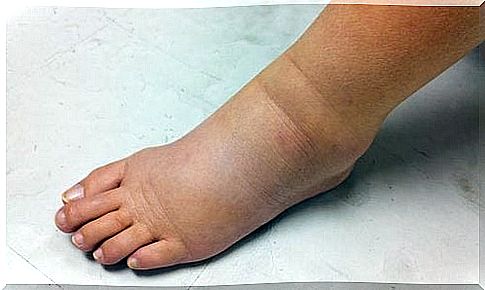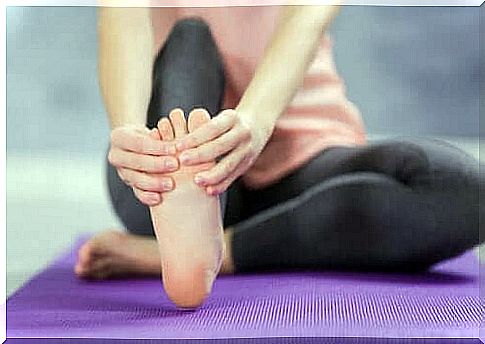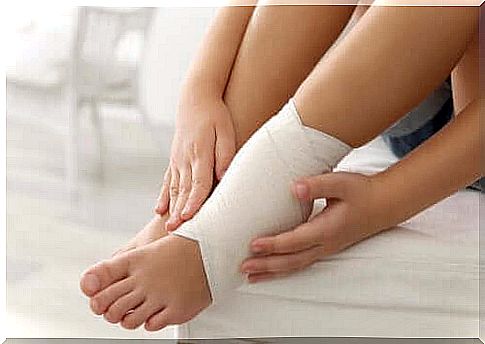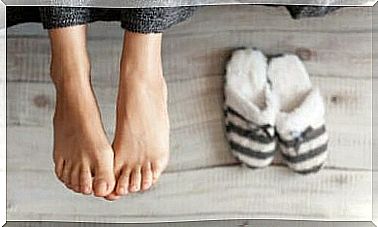Treatment Of Swollen Ankles And Feet

Before choosing a suitable treatment for swollen ankles and feet, it is important to first determine the cause of the swelling. Does it have anything to do with ligaments? Can’t move your ankles the right way? If so, you need to see a doctor. However, if you have only a minor injury or swelling due to fluid buildup, try the tips below for treating swollen ankles and feet.
Swollen ankles and feet are a common problem in older adults and pregnant women. In addition, it is common in athletes and people whose work involves physical exertion. While it can be caused by poor blood circulation, injury, and infections, the swelling is almost always mild and can improve if you take some basic steps.
Treatment of swollen ankles and feet
First, you need to determine how severe your symptoms are before trying any of these tips. In the case of so-called normal, transient swelling – one that occurs after you have remained in the same position for a long time – easy exercises and basic treatment are enough to cure it.
However, if your symptoms are persistent or you feel pain and your ankles become bruised or your walking becomes more difficult, you should see your doctor so that he or she can prescribe the right kind of treatment for you. With physical tests and x-rays, he or she can determine what kind of disability you have in more detail.
Here are some home remedies you can use to cure poor blood circulation and swelling at home.
1. Raise your legs

The best exercise to treat swollen ankles and feet is to raise your legs higher than your heart. This simple movement improves blood circulation from the lower extremities to the heart and in turn reduces swelling.
It’s a great way to get quick relief if you’re numb from your ankles and feet or feel pain.
Do like this
- Lie on a comfortable surface such as a bed or yoga mat and lift your legs towards the ceiling against the wall.
- Keep them elevated for 10-15 minutes and then lower.
2. Do light exercises
Light exercise has therapeutic effects on injuries that cause swelling of the ankles. In fact, it’s one of the best ways to reactivate your bloodstream. It also prevents fluid buildup.
The World Health Organization (WHO) advises that light exercise should be done at least a couple of hours a week.
Do like this
- If you suffer from an ankle injury, see your doctor or physiotherapist to discuss the forms of exercise that are best for your case.
- Avoid strenuous exercise routines until the ankle heals.
- Choose light activities such as walking or swimming. You can also stretch with the help of exercise tape.
3. Rest helps relieve swelling of the ankles and feet caused by injuries

While light exercise will help relieve swollen ankles, it is also healthy to rest for a few days. Rest reduces the weight the body places on the ankles. It also helps relax muscles and promotes the recovery of damaged tissues.
Do like this
- If you suffer an injury or a newly sprained ankle, rest for 2-3 days.
- If you feel pain even in the rest position, use crutches.
4. Use ice
The use of ice bags can be very helpful in treating swollen ankles. Cold has a therapeutic effect as it reduces the level of inflammation. Its use by rubbing speeds up pain relief and also reduces bruising and muscle cramps.
Do like this
- Put several ice cubes in a bag or wrap them in a clean cloth.
- Then gently rub the ankles with it.
- Keep doing it until you no longer feel pain. Then rest for 2-4 hours and repeat again.
- Do this for 3-4 days until the swelling is under control.
5. Use a bandage for an ankle injury

Bandaging an injured ankle serves as a good complement to other treatments to reduce swelling and bruising. You can rub the affected area with anti-inflammatory creams or oils before doing so. Keep the bandage on your foot for two or more days, depending on the severity of the swelling.
Do like this
- Start by cutting a horseshoe-shaped piece of felt. You can also buy a pre-made wrapper from a store or pharmacy.
- Place it around the outside of the swollen ankle.
- Wrap the bandage making sure it is not too tight. Make sure the bandage does not prevent blood from circulating as it will make the swelling worse.
Also contribute to improving your diet and avoid using too much salt. Salt slows down the effectiveness of treatments as it increases fluid retention. Also drink plenty of water and avoid alcohol and tobacco as much as possible.









